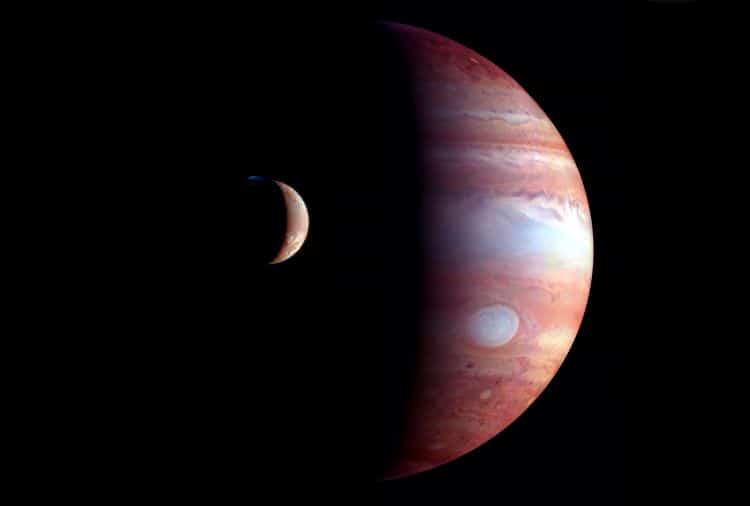
Photo of Jupiter’s Moon, Europa. (Photo: Arch88/Depositphotos)
Scientists have long thought that they could detect evidence of extraterrestrial life by examining the ice found on planetary bodies. With signs of ice on Mars, Jupiter, Saturn, Uranus, Neptune, and Pluto, this poses many exciting possibilities for researchers. A recent study found that rather than having to extract an ice core from planetary bodies, similar to how scientists study Antarctic ice cores, they would instead only need one grain of ice.
The research paper is specifically concerned with the possibility of finding life signs on Europa or Enceladus, which are moons of Jupiter and Saturn, respectively. Europa contains a vast ocean beneath its surface that researchers have long been fascinated by. Several years ago, NASA’s Cassini spacecraft discovered that Enceladus contained molecules holding carbon dioxide and ammonia, both of which are vital for life. Both of these discoveries make these moons perfect for further exploration and scientists plan to test small specks of ice that are ejected into space through their subsurface ocean geysers.
Plans are already in progress to send small, unmanned spacecrafts to Jupiter in the coming years, and scientists hope that they will be able to learn more about these ice particles. The Europa Clipper, which is scheduled to arrive in Jupiter’s orbit in April 2030, will be equipped with instruments that have the capabilities to examine the ice worlds of Jupiter, as well as its surrounding moons.
“With suitable instrumentation, such as the SUrface Dust Analyzer [SUDA] on NASA’s Europa Clipper space probe, it might be easier than we thought to find life, or traces of it, on icy moons,” says senior co-author Frank Postberg, a professor of planetary sciences at the Freie Universität Berlin.
In the study, researchers simulated the types of droplets that would be found on Europa. What they discovered was that instruments like Europa Clipper’s SUDA can detect cellular material in one out of hundreds of thousands of ice grains. In their simulation, the researchers used a single-celled bacteria, Sphingopyxis alaskensis, which is found off the waters of Alaska. This bacteria is the perfect choice due to its small size and the fact that it can live in cold water with very few nutrients. It’s expected that the icy environments on Saturn and Jupiter’s moons could contain analogous organisms.
“For the first time, we have shown that even a tiny fraction of cellular material could be identified by a mass spectrometer onboard a spacecraft,” says lead author Fabian Klenner, a University of Washington postdoctoral researcher in Earth and Space Sciences. “Our results give us more confidence that using upcoming instruments, we will be able to detect lifeforms similar to those on Earth, which we increasingly believe could be present on ocean-bearing moons.”
Scientists recently discovered that they may be able to find traces of extraterrestrial life in ice grains on Jupiter and Saturn’s icy moons.

Photo of Saturn’s moon, Enceladus. (Photo: Mode-list/Depositphotos)
h/t: [Gizmodo]
Related Articles:
James Webb Space Telescope Just Proved it Can Find Signs of Life on Other Planets
NASA’s Mars Curiosity Rover Photographs a Mysterious “Alien Portal”
45 Years Ago NASA Launched an Infographic for Aliens to Find in Outer Space
NASA Spots a Perfect Bear Face Made of Craters on the Surface of Mars
